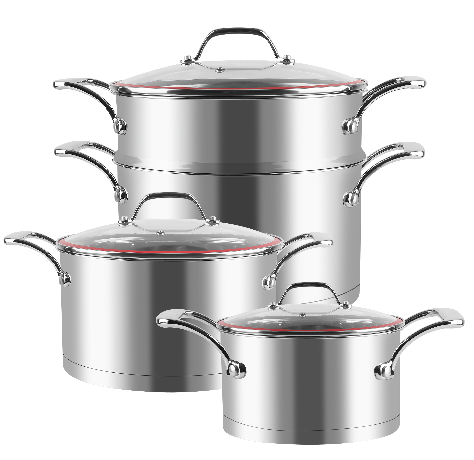Email us at Hailey@topkitchen.cn or Call us today at +86-158 1491 0345
To learn how we can help you with your kitchenware and cookware needs.
Questions demanding that a distinction be drawn between various grades of stainless steel such as 304, 430, 220 and so on and the meaning of the different numbers including 18/8, 18/10, 18/0 often ranks the top of our FAQs and this post is going to provide answers to those questions.
Durability, corrosion resistance, and quality are what define the grade of stainless steel. The numbers, on the other hand, denote the amount of chromium and nickel that the stainless steel is composed of.
However, before dashing in to the market to spend you hard earned money on any stainless steel cookware, always ensure that you are doing so with a reputable manufacturer. With this, you will be sure of shopping from the best brands in the market.
18/8 and 18/10: The first number indicates the amount of chromium present, whereas the second number indicates the amount of nickel present. 18/8 stainless steel, for example, contains 18 percent chromium and 10 percent nickel. The stainless steel cookware grades 18/8 and 18/10 are also known as Type 304 (304 Grade) and are part of the 300 series. They are the two most popular stainless steel grades used in cooking and dining.
It contains 0.8 percent carbon and at least 50% iron. Nickel improves the metal's oxidation and corrosion resistance while also giving it a 'silver-like' sheen. The chromium binds oxygen to the surface of stainless steel, protecting the iron in the product from oxidation and giving it its distinctive shine and mirror-like gloss.
18/0: Also known as Type 430, this member of the 400 series is magnetic in contrast to the 300 series. Despite the fact that the 18/0 grade is more likely to rust and lose its lustre over time due to its low corrosion resistance due to its 0.75 percent nickel content, it is still a high-quality stainless steel grade regardless of the nickel content.
200 series: Manganese is used instead of nickel in this series, making it more corrosive and more affordable than its 304 counterpart. This series is widely used to produce food containers and is completely safe. It has no magnetic properties.

Stainless steel is named after the fact that, unlike steel, it does not stain, tarnish, or rust. Although stainless steel cookware is a great alternative to coated aluminum cookware, it does not provide optimal heating, which is why pots and pans are typically made of tri-ply construction. Consider a stainless steel frying pan, for example. Where there is a combination of both an aluminum component with two layers of stainless steel. With this, heat can easily be distributed evenly through the entire pan. However, the good part is that this aluminum core or component does not make contact with your food at all.
Because it contains no chemicals and is resistant to oxidation and corrosion, especially in the presence of acidic ingredients, it is a healthy choice for use with food and beverages. Its durability, luster, versatility, affordability, ease of maintenance, and hassle-free cleaning have made it a beloved kitchen staple and a must-have.
Without a doubt, we are sure that you have added a brick of enlightenment and useful piece of information to what you must have known about stainless steel cookware.
So, if you have been considering investing in high quality stainless steel cookware that will stand the test of time, kindly contact us for the best deal.
You can also reach out to us for any question and consultation with regards to any of our high grade cooking wares.